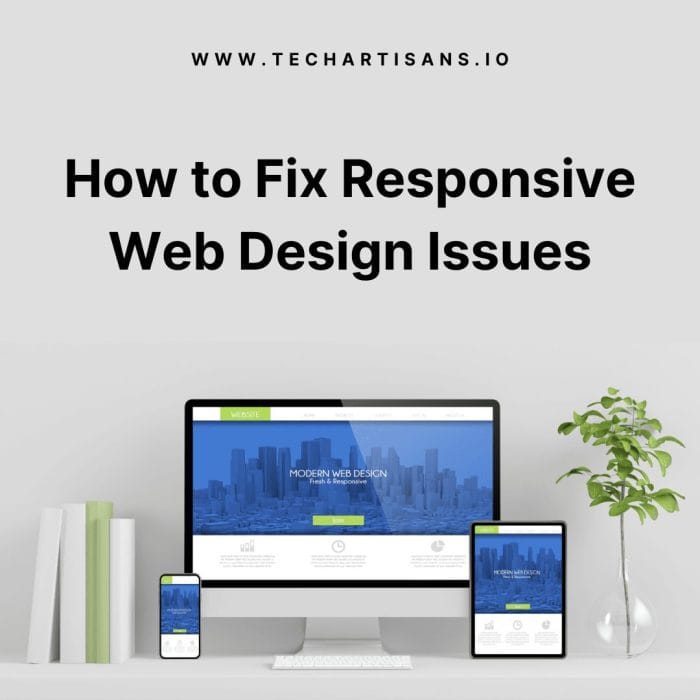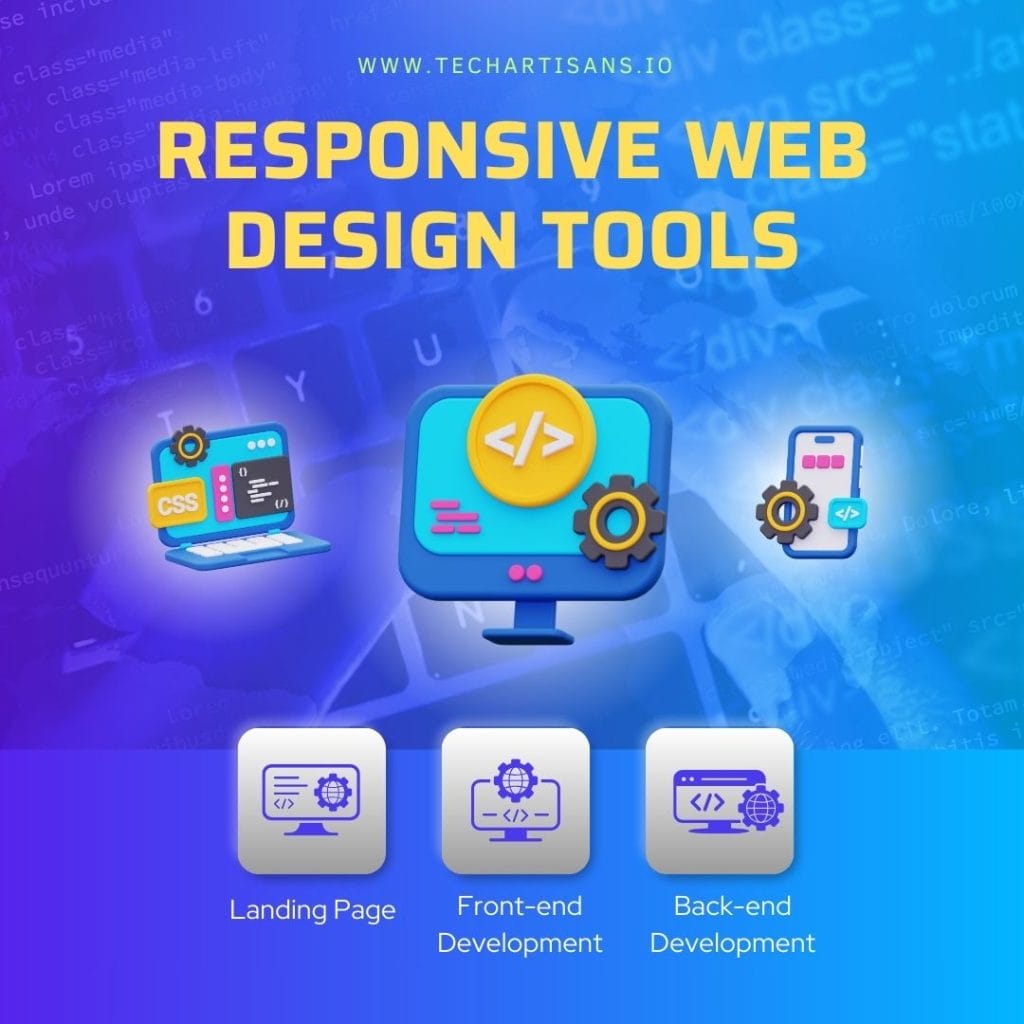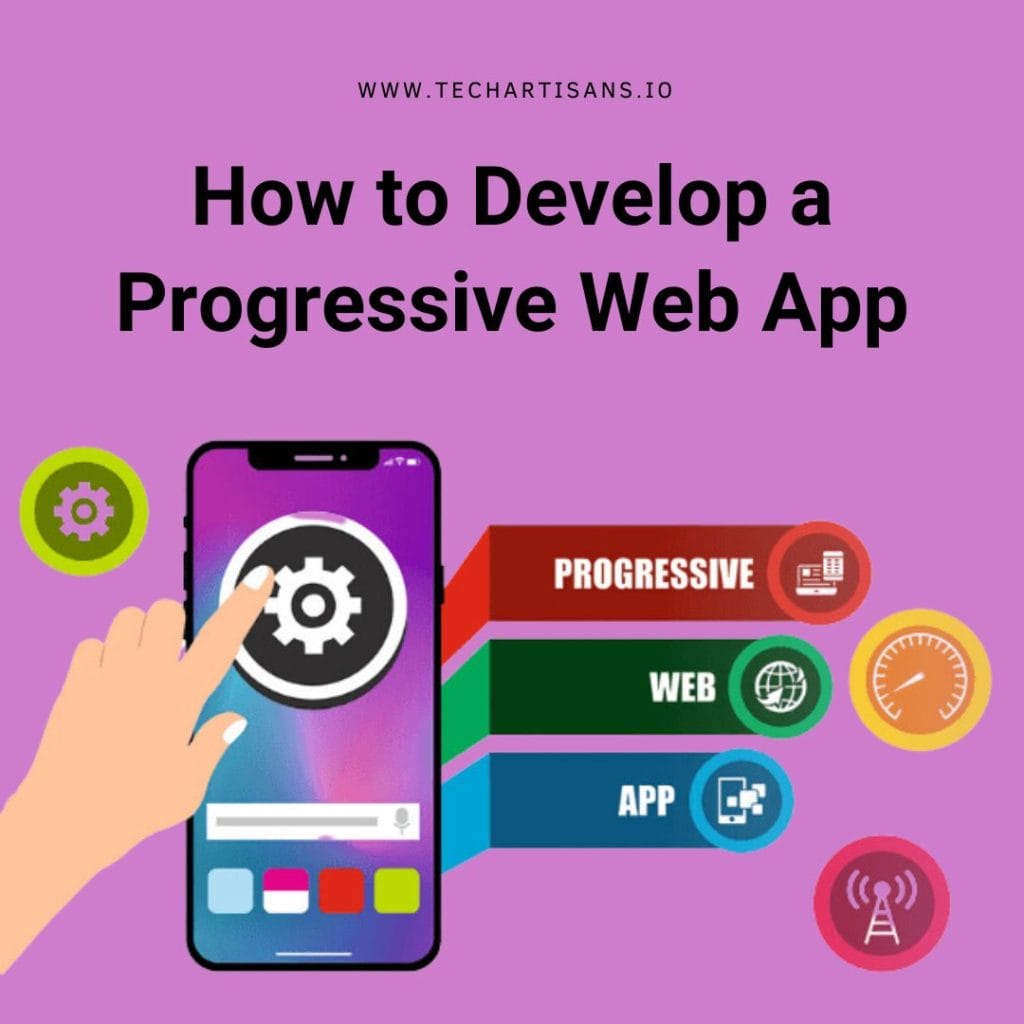In today’s mobile-first world, responsive web design is crucial. It ensures that your website delivers an optimal user experience across all devices. For small to medium business owners, mastering this concept can mean the difference between a triumphant online presence and a missed opportunity. This post aims to provide actionable solutions to common problems associated with responsive web design.
Responsive Web Design Challenges
Before we dive into how to fix responsive web design problems, it’s crucial to understand the common challenges with this technology. These issues can range from content that doesn’t resize properly to navigation menus that collapse in a less-than-optimal manner to images that take too long to load on certain devices. Acknowledging these challenges is the first step towards creating a more efficient and user-friendly responsive design.
Mobile Device Rise and Web Traffic Impact
The advent of smartphones has precipitated a significant shift in web traffic in the past decade. Mobile devices now account for over half of global web traffic, a testament to their ubiquity and ease of use. This trend underscores the importance of responsive web design in reaching a larger audience and providing them with seamless navigation experiences.
Outline Common Challenges
When it comes to responsive web design issues, navigation problems often top the list, with menus and links not adjusting well to different screen sizes. Image scaling is another prevalent issue where images fail to resize appropriately, leading to distorted visuals or slow page load times. Moreover, cross-device compatibility poses a significant challenge, as ensuring a consistent and user-friendly experience across various devices and browsers can be intricate.
Navigating the Pitfalls of Menu and Navigation
In this section, we will delve deeper into how to effectively navigate the pitfalls associated with menus and navigation in responsive web design, providing practical solutions to enhance user experience across all devices.
Explore Solutions For Responsive Navigation Menus
Implementing hamburger menus or a drop-down system can be a viable solution for catering to different screen sizes. Similarly, prioritizing key navigational elements and minimizing excessive menu options can streamline navigation. Always ensure to test your navigation on various devices to maintain a consistent user experience.
Consistent User Experience Across Devices
Maintaining a consistent user experience across various devices is paramount in responsive web design. It ensures that all users, regardless of the device they’re using, derive the same value and satisfaction from your site. This uniformity boosts user engagement, reduces bounce rates, and positively impacts your website’s overall performance.
Achieving Cross-Device Compatibility
Cross-device compatibility is another cornerstone of responsive web design, ensuring your website provides a seamless and engaging experience across all devices and browsers. Let’s dive deeper into how to fix responsive web design issues related to achieving cross-device compatibility.
Challenges of Rendering Websites
Rendering the same website on both desktop and mobile devices can be a complex process owing to distinct screen sizes and resolutions. Issues may arise such as improper layout structures, overlapping elements, and text readability issues on smaller screens. Successfully overcoming these challenges is key to truly responsive web design.
Strategies for Device Compatibility
A pivotal strategy for ensuring compatibility and consistency is a thorough and regular testing process across different devices and browsers. Utilizing CSS media queries can help in fine-tuning your website’s layout, structure, and content for various screen sizes. Additionally, consider using fluid grids and flexible images to ensure your website’s elements adapt seamlessly to different screen resolutions.
Optimizing Images for Responsive Design
When it comes to enhancing the performance of your responsive web design, image optimization plays a pivotal role. Optimizing images isn’t merely about reducing file size; it also encompasses ensuring high-quality visuals that load quickly and display appropriately across various devices. Let’s explore the best practices for optimizing images for responsive design.
Challenges of Rendering Websites
Rendering websites on both desktop and mobile devices brings its own set of challenges. These can include issues with image resolution, load times, and differing screen sizes. The layout that works best on a widescreen desktop monitor may not translate well to the limited real estate of a mobile device’s screen, leading to an unsatisfactory user experience.
Solutions for Maintaining Image Clarity
To maintain image clarity on high-pixel-density devices, consider using vector graphics that scale without losing quality. Additionally, employ responsive image techniques, serving different image files based on the device’s screen size and resolution. Regular testing on various devices can also help ensure images display correctly.
Enhancing Browser Compatibility
In responsive web design, ensuring optimal browser compatibility is paramount. Your website should function seamlessly and retain its aesthetics across various web browsers, from Google Chrome and Firefox to Safari and Internet Explorer. This section delves into strategies for enhancing browser compatibility in your web design.
Addressing Older Browsers and Responsive Design
Older browsers often pose challenges for responsive web design due to their lack of support for modern web standards. To tackle this, consider using polyfills to replicate modern functionality on older browsers, while providing a graceful degradation strategy to ensure basic functionality in the absence of advanced features.
Speeding Up Page Load Times
In the digital landscape, speed is undeniably crucial. The faster your website loads, the better the user experience, which can lead to higher visitor engagement, retention, and conversions. In this section, we will delve into practical strategies to speed up page load times for your responsive web design.
Responsive Design Impact on Page Load
Responsive design can significantly impact page load times as the browser may need to download extra resources or execute complex JavaScript to display content appropriately on various devices. Furthermore, if images and other media aren’t optimized, they can cause significant delays in load times, particularly on mobile devices with slower network connections.
Optimizing Load Times for Better User Experience
Minimizing HTTP requests, enabling compression, leveraging browser caching, and optimizing images and CSS are all effective techniques for improving load times. Implementing these strategies can greatly enhance user experience by providing fast, efficient access to your website’s content across all devices, supporting truly responsive web design.
Streamlining Content for Mobile Users
As we move further into the mobile-first era, streamlining content for mobile users has become a critical aspect of responsive web design. The following section will provide practical strategies to optimize and structure your web content for a seamless and engaging mobile user experience.
Content Prioritization for Mobile Users
Content prioritization is crucial for mobile users due to the limited screen space and the potential for slower load times. It ensures that the most important information is presented first, enhancing user experience by making navigation easier and reducing unnecessary data consumption.
Tips for Mobile-Friendly Content Strategy
Simplicity is Key: Keep your content concise and easy to digest. Users on mobile devices prefer information that is direct and to the point.
Mobile-First Approach: When designing your content, consider mobile users first. This strategy helps ensure your content is effective across all devices.
Utilize Visual Media: Given their smaller screens, mobile devices benefit from using images and videos. These elements can convey information more effectively than large blocks of text.
Responsive Typography: Ensure your text is easily readable across different devices. Utilize flexible, responsive typography that automatically adjusts based on the viewer’s device.
Clear Calls to Action: Prominent and clear calls to action (CTAs) are vital. They guide users through your site and promote engagement.
Transitioning From Fixed to Fluid Layouts
In the ever-evolving landscape of web design, transitioning from fixed to fluid layouts is a critical step in enhancing your responsive web design strategy. This section will delve into the nuances of fluid layouts, elucidating how they can provide a more dynamic and optimized user experience across various devices.
Converting Fixed Layouts to Responsive Designs
Converting fixed layouts to responsive designs begins with setting the viewport to scale with the device’s width and ensuring elements respond to changing window sizes. Then, substitute fixed width dimensions with relative units like percentages or viewport units. Finally, incorporate media queries to adapt your design to different device widths, ensuring a seamless user experience across all platforms.
Benefits of Fluid Layouts for Responsive Sites
Fluid layouts benefit responsive websites, enhancing the user experience and ensuring seamless navigation across various devices.
User-Friendly: Fluid designs automatically adjust to different screen sizes, providing an optimal viewing experience from desktops to smartphones enhancing user satisfaction and engagement.
Future-Proof: With new devices hitting the market, a fluid layout ensures your site remains functional and aesthetically pleasing, regardless of future screen size standards.
Improved SEO: Search engines favor responsive web design. By implementing fluid layouts, you can improve your site’s SEO ranking, driving more organic traffic.
Increased Conversion: A user-friendly and mobile-optimized site can lead to an increase in conversion rates, benefiting your bottom line.
Addressing Advanced Interactive Elements
Advanced interactive elements can significantly enhance user engagement and overall website functionality. As we dive deeper into the intricacies of responsive web design, understanding how to effectively incorporate these elements is crucial to creating a dynamic, user-focused experience across all device platforms.
Handling Data Tables in Responsive Design
Data tables can present a challenge in responsive web design, due to their complexity and the amount of information they contain. It’s critical to ensure that these tables retain their clarity and functionality across all devices, despite differing screen sizes. Solutions such as responsive table design and utilizing scrollable containers can help manage data tables effectively.
Tackling Forms in Responsive Web Design
Forms are a critical component of many websites, yet they can pose challenges in a responsive design context. A well-designed form should adapt to various screen sizes, ensuring ease of use across all devices. Strategies such as utilizing flexible grid-based layouts, prioritizing essential fields, and incorporating responsive font sizes can significantly enhance form usability in your responsive web design.
Incorporating Interactive Elements
Interactive elements like accordions, sliders, and carousels can enhance user engagement and pose responsive design challenges. Using scalable images and text within these elements can prevent distortion or cropping on smaller screens. JavaScript plugins like Slick Carousel help create responsive sliders quickly and efficiently. For accordions, it’s crucial to ensure that the text within each section is responsive and legible on all devices.
Testing and Quality Assurance
Ensuring the success of your responsive web design involves more than just implementation. It also requires rigorous testing and quality assurance to guarantee optimal performance across all devices. This section will dive into the crucial aspects of testing your responsive design and maintaining its quality to ensure a seamless user experience.
Importance Of Responsive Testing
Responsive testing across different devices is paramount in ensuring a seamless user experience. It verifies that your site’s layout, images, and functionalities are displayed correctly, irrespective of the device’s screen size. This process aids in identifying and rectifying any responsive web design problems, thereby optimizing user engagement and satisfaction.
Tools for Effective Testing and QA
There are several tools and techniques available for effective testing and quality assurance in responsive web design.
Browser Developer Tools: Almost every modern browser has built-in developer tools. These allow you to test your website across various screen resolutions and identify glitches.
Automated Testing Tools: Testing tools such as Selenium or Jest can significantly expedite the testing process. They simulate user interactions and test key functionalities across multiple devices and browsers.
Responsive Design Checkers: Online tools like Responsinator and Google’s Mobile-Friendly Test provide a quick way to assess how your website appears on different devices, helping identify potential responsiveness issues.
These tools and techniques can ensure your website offers a seamless user experience across all platforms.
Conclusion
Addressing responsive web design issues is essential for the growth and success of your business in this digital age. Ensuring a seamless user experience across various devices not only bolsters user satisfaction but also improves SEO ranking. As a business owner, proactively tackling these issues and optimizing your website for all screen sizes should be a priority. It might seem daunting at first, but remember, the journey of fixing responsive web design problems leads to a more engaging and accessible digital presence for your business, ultimately driving growth and success.







